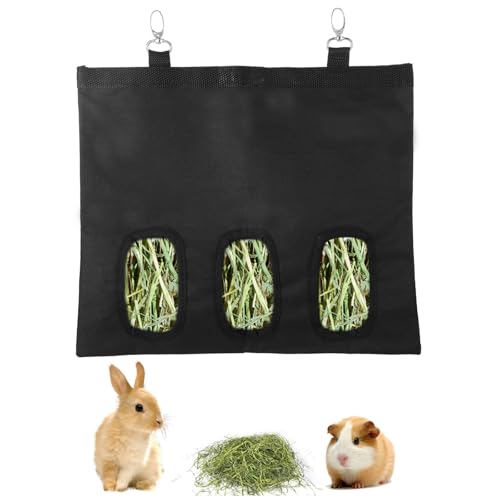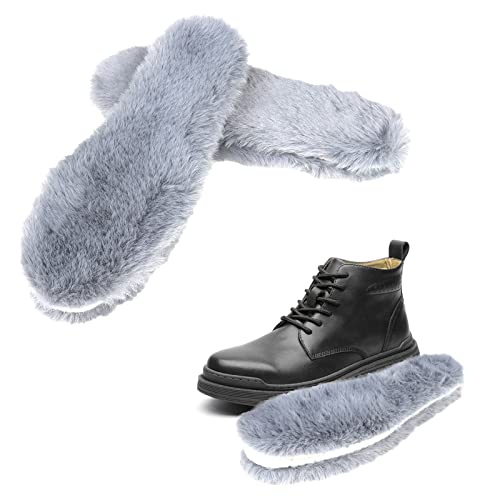Well.
This whole genes thing likes to throw wrenches my way. It's a lot of fun, though.
Regarding the Cali, she HAS bands, the fun part is that they are showing especially in the ears, which does not make much sense for me. I took some ear hairs from her the other day and could count 4 distinct bands of black and copper. The spot on the side is white up to the tip, similar to your second picture, so I understand this does confirm she's steel (agouti), right?
Regarding the magpie... I am unsure if he's a high-rufous magpie or an extremely diluted harlequin. He's brindled black and white at first sight, but he is actually quite creamy on some of the white areas, and his hindquarters are straight-up brownish. I can't find anything online about magpies having cream or blue and fawn harlequins being so dark.
I am pretty sure that he was the dad of a litter that contained a BW magpie, a harlequin, two tricolors and a red, and then another with 5 harlis and a red (Doe seems to be tricolor or broken red).
Any clues here?
All very interesting...
Let's start with the buck. As far as I know, there is no such thing as a high-rufus magpie; a magpie doesn't have
any rufus. The chinchilla or sable allele that creates a magpie blocks most or all production of pheomelanin, so a magpie should not have any yellow/orange/red fur. While occasionally a chinchilla will be "rusty" for a while, that usually molts out by the time the rabbit gets its adult coat. But your buck has distinctly tan patches, so I'd call him a
low-rufus harlequin. I would not call him "diluted" because that has a specific genetic meaning. A dilute rabbit (having two recessive dilute alleles <
dd>) has all of the colors diluted, but your buck has very black fur in some areas - his dark fur is not blue as it would be in a dilute. Pale orange can happen without any dilute alleles needed; it just lacks those rufus modifiers that intensify the color.
If he is the sire of the first litter pictured - which does appear to have a magpie kit in it, adorable, by the way - then that means he and/or the dam carried a chinchilla <
c(chd)> or sable <
c(chl)> allele that paired up with another <
c(chd)>, <
c(chl)>, himi <
c(h)> or REW <
c> from the other parent.
On to the Cal doe... I would not actually interpret those photos or descriptions as steel. While the steel guard hairs have a white "stem," (all the guard hairs of any color I've ever looked at have pale stems, though I have never seen dominant black <
E(D)>), the underfur on a steel, or any agouti (not including non-extension colors like orange), is usually dark. Look at the clump of steel fur in my previous post and you can see the slate gray underfur.
Below are photos of steel (gold-tipped), chestnut, and chinchilla. It is sometimes a little (or a lot, especially on dilutes and depending on modifiers) faded at the very base of the fur, but you'll almost always have dark underfur on an agouti with normal extension or the steel allele (but not on non-extension colors).


 However
However... there is a characteristic called "snowball" in which the rabbit has color only at the tips of the hair, with extensive white undercolor where there would normally be dark color. I've never found anything from anyone who really understands what's going on with this, though
@judymac is trying to work it out, and has posted a number of times about it on this forum.
If you look at the photo of the steel hair posted previously, you will see three distinct bands above the white stem: dark, then a pale band, then a dark tip. That, rather than the white stem, is diagnostic of steel. I don't see any indication of banding on the hairs on your doe; they all look like they have solid tips to me.

If you could pull a couple of single guard hairs from the doe's shoulder patch and take a close-up of them on a light or dark background (whichever shows the most detail), it would easier to draw a more confident conclusion about her. If there is no banding on the body hairs, I do not think you can conclude the doe is an agouti, steel or otherwise.
The ears look to me like pretty typical Californian summer/molt pattern. As I said, they can get pretty darn brassy. I don't know what to tell you about finding bands on the ear hair, other than it would be surprising to find as many bands as you're describing, especially on such short hair. (I'm not saying you're not seeing them, just that they are probably not due to being an agouti.) I don't know exactly how quickly the follicles react to temperature changes, but possibly temp swings during the hair growth could explain it. But I don't really know how you could get a ring pattern on the ears but not the body fur.
Here's an example of a fairly typical Californian during a very warm summer (my Cals often looked like this when I raised them in Southern California):

And here's another example of how the temperature sensitivity (and also, importantly, humidity-sensitivity) of the himi allele can affect the fur of himalayan-patterned rabbits. It was not particularly cold when this litter was born, but there were several weather changes that produced spikes of humidity. Even though most people would not guess it, because the fur really looks "ticked," as if it was a sable agouti, this is a himalayan Satin kit (the red eyes give it away):


He molted out to look like this:

Interesting side note: a long-time Cal breeder told me that frosty kits (which is what breeders call kits that look like the one above) do not tend to get "smutty," i.e. develop dark patches on the usable parts of the pelt, which is a DQ for showing Cals. I'm testing that hypothesis in my barn right now.



















![FHQHTH Faux Rabbit Fur Purse Fuzzy Handbags for Women Evening Handbags Al alloy Shoulder Strap [Rabbit Red]](https://m.media-amazon.com/images/I/41l5Hd2qrhL._SL500_.jpg)









































